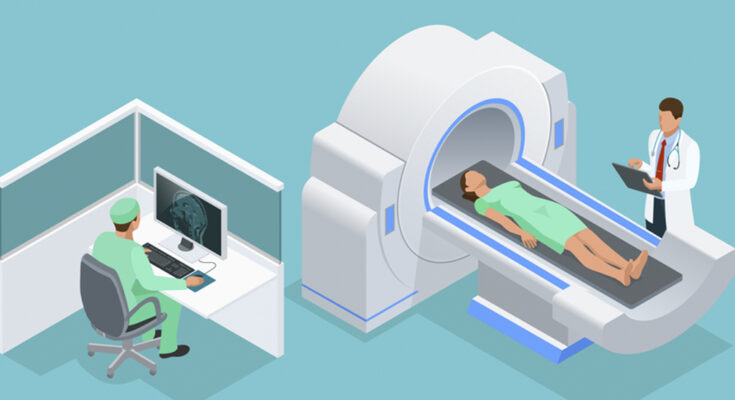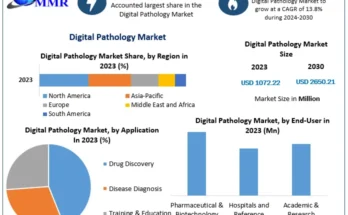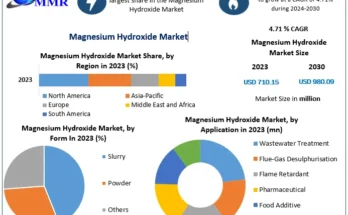Dual and multi-energy computed tomography (CT) are advanced imaging techniques used in medical imaging that provide improved image quality and diagnostic accuracy compared to conventional CT scans. These techniques use multiple energy levels of X-rays to produce images that can differentiate between different materials within the body, such as bone, soft tissue, and contrast agents. Dual-energy CT (DECT) uses two different X-ray energy levels, usually high and low, to produce images. These images are then processed to generate a map of the material composition of the body, providing detailed information on the distribution of different types of tissues and contrast agents.
The dual and multi-energy computed tomography (CT) market is driven by several factors, including:
Growing prevalence of chronic diseases: The increasing incidence of chronic diseases, such as cancer and cardiovascular diseases, is expected to drive the demand for advanced imaging techniques like dual and multi-energy CT.
Rising geriatric population: The aging population is more susceptible to chronic diseases, which is expected to increase the demand for imaging technologies like dual and multi-energy CT.
Advancements in technology: Continuous advancements in imaging technology, including improvements in detector technology, software algorithms, and hardware, are expected to improve the accuracy and efficiency of dual and multi-energy CT scans, driving market growth.
Increasing demand for non-invasive diagnostic procedures: Dual and multi-energy CT scans offer a non-invasive diagnostic alternative to invasive procedures, which is expected to drive market growth.
Growing demand for personalized medicine: Dual and multi-energy CT scans can provide more detailed and personalized information on the composition of the body, allowing for more personalized treatment planning, which is expected to increase demand for these techniques. However, the high cost of dual and multi-energy CT systems and the need for skilled personnel to operate the equipment are some of the factors that may hinder market growth. Additionally, concerns regarding radiation exposure and the potential for misinterpretation of results may also limit the adoption of these techniques.
COVID Impact
The COVID-19 pandemic has had a mixed impact on the dual and multi-energy computed tomography (CT) market. On one hand, the pandemic has led to increased demand for CT imaging in general, as CT scans have been used to diagnose and monitor COVID-19 pneumonia in patients. On the other hand, the pandemic has also led to disruptions in the supply chain and a decrease in the number of elective procedures, which has negatively impacted the market. In the early stages of the pandemic, there was a surge in demand for CT imaging, particularly in regions with a high prevalence of COVID-19. Many hospitals and imaging centers adopted dual and multi-energy CT systems to help diagnose and monitor the progression of the disease. This led to a short-term boost in market growth.
The global dual and multi-energy computed tomography (CT) market can be analyzed regionally to understand the market dynamics and growth opportunities in different parts of the world.
North America is the largest market for dual and multi-energy CT, due to the high adoption rate of advanced imaging technologies in the region, the presence of key market players, and a well-established healthcare infrastructure. The United States is the major contributor to the market in North America, accounting for the largest share of the market.
Europe is the second largest market for dual and multi-energy CT, with a significant share of the market held by countries such as Germany, France, and the UK. The market in Europe is driven by the increasing demand for advanced imaging technologies, a growing geriatric population, and favorable government initiatives supporting the adoption of these technologies.
The Asia-Pacific region is expected to witness the fastest growth in the market, driven by factors such as the increasing prevalence of chronic diseases, a growing geriatric population, and rising healthcare expenditure. China, Japan, and India are the major contributors to the market in the region, due to the presence of a large patient pool and a growing demand for advanced imaging technologies.
Latin America and the Middle East & Africa are also expected to witness significant growth in the market, driven by increasing government initiatives to improve healthcare infrastructure, rising healthcare expenditure, and a growing demand for advanced medical imaging technologies. Overall, the global dual and multi-energy CT market is expected to continue growing in the coming years, driven by increasing demand for advanced medical imaging technologies, growing prevalence of chronic diseases, and rising healthcare expenditure in emerging economies.
Dual-energy computed tomography (DECT) and multi-energy computed tomography (MECT) are advanced imaging techniques that have gained increasing popularity in recent years. These techniques enable the acquisition of two or more sets of images with different energy levels, allowing for enhanced tissue characterization, improved material differentiation, and better diagnostic accuracy.
Siemens Healthineers: Siemens is one of the leading providers of DECT and MECT systems, with its SOMATOM Definition Edge and SOMATOM Drive systems being among the most widely used. These systems are equipped with advanced software that enables accurate material differentiation and enhanced imaging of different tissues and structures.
GE Healthcare: GE Healthcare is another major player in the DECT and MECT market, offering a range of systems such as the Revolution CT and Discovery CT750 HD. These systems are designed to deliver high-quality images with low radiation dose and offer advanced imaging capabilities such as spectral imaging and dual-energy bone removal.
Philips Healthcare: Philips Healthcare is also a significant player in the DECT and MECT market, with its IQon Spectral CT system being a popular choice among healthcare providers. This system utilizes a unique detector technology that enables spectral imaging without the need for a separate detector or filter.
Canon Medical Systems: Canon Medical Systems is a leading provider of medical imaging equipment, including DECT and MECT systems such as the Aquilion ONE / PRISM Edition. These systems offer high-speed imaging, advanced dose reduction techniques, and enhanced material characterization capabilities.
Toshiba Medical Systems: Toshiba Medical Systems (now part of Canon Medical Systems) is another major player in the DECT and MECT market, offering a range of systems such as the Aquilion Prime SP and Aquilion RXL. These systems utilize advanced technology such as adaptive iterative dose reduction and spectral imaging for improved image quality and reduced radiation dose.
In addition to these major players, there are several other companies that offer DECT and MECT systems, including Hitachi Healthcare, Neusoft Medical Systems, and Shenzhen Anke High-Tech Co., Ltd. However, the market is highly competitive, with companies vying for market share through innovation, pricing, and service offerings.
The market for dual-energy computed tomography (DECT) and multi-energy computed tomography (MECT) can be segmented in various ways based on different factors. Here are a few possible market segmentation approaches:
Technology Type: This segmentation approach categorizes the market based on the type of technology used in DECT and MECT systems. For example, DECT systems can be divided into two types: dual-source DECT and rapid kV-switching DECT. Similarly, MECT systems can be divided into photon-counting MECT and energy-integrating MECT. This segmentation approach can help identify the specific technology preferences of different market segments.
End-user: Another way to segment the market is based on the end-users of DECT and MECT systems. These systems are used in various healthcare settings, including hospitals, diagnostic imaging centers, and research institutions. Within each of these settings, there may be different user groups, such as radiologists, oncologists, and surgeons. This segmentation approach can help identify the specific needs and preferences of different end-users.
Application: DECT and MECT systems are used for various clinical applications, including oncology, cardiovascular imaging, neurology, and musculoskeletal imaging. This segmentation approach can help identify the specific application areas that are driving demand for these systems and the unique features that are required for each application.
Geography: The market for DECT and MECT systems can also be segmented based on geography. Different regions may have different levels of demand for these systems, depending on factors such as healthcare infrastructure, reimbursement policies, and regulatory environment. This segmentation approach can help identify the specific market dynamics and growth opportunities in different regions.
Price Range: Another way to segment the market is based on the price range of DECT and MECT systems. These systems can range from relatively low-cost models designed for basic imaging needs to high-end models with advanced features and capabilities. This segmentation approach can help identify the specific market segments that are most price-sensitive and those that are willing to pay a premium for advanced features and capabilities.
Key Questions Answered in This Report:
- How has the global Market performed so far and how will it perform in the coming years?
- What are the key regional Markets?
- What has been the impact of COVID-19 on the global Market?



